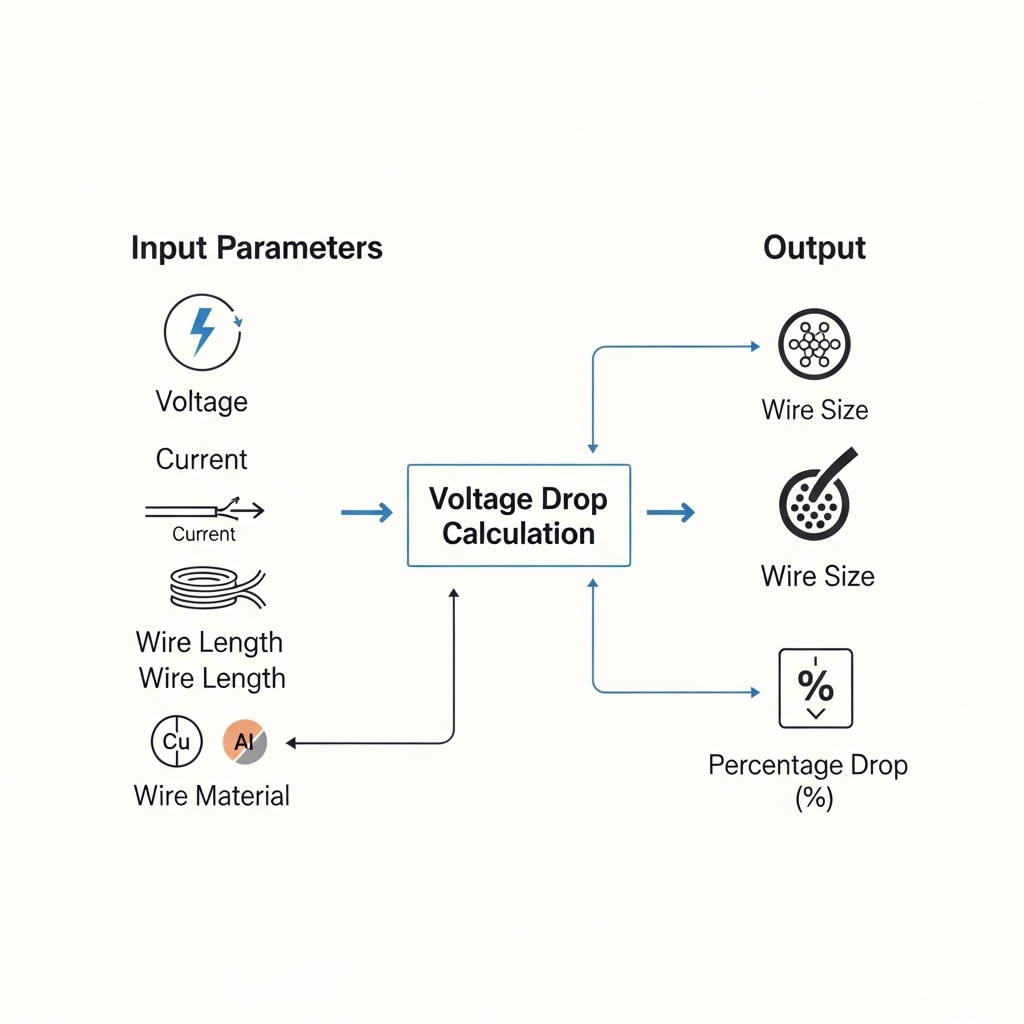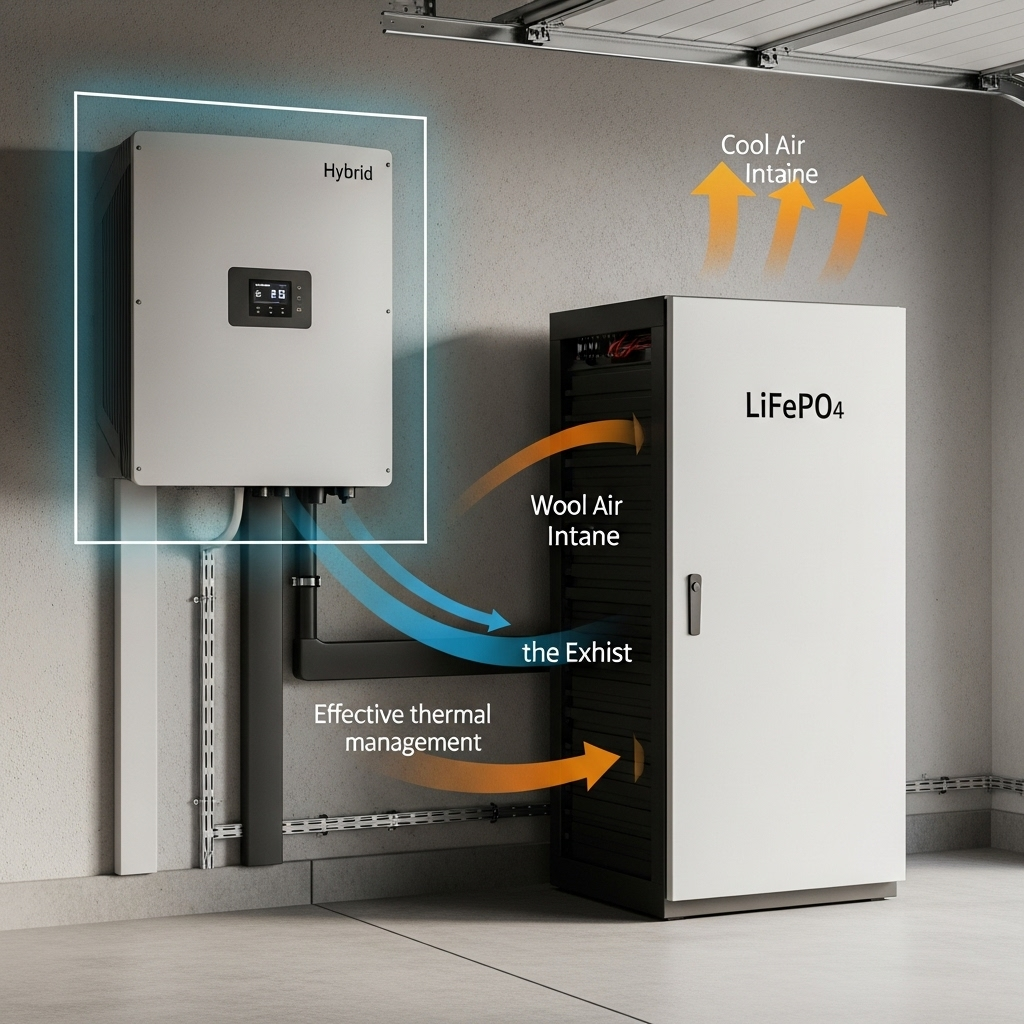A home battery system is a significant step toward energy independence. It stores solar energy for use at night or during an outage, giving you control over your power. But to protect this investment, you must manage its environment. Heat is a primary adversary of battery health, reducing both performance and lifespan. Proper home battery room ventilation is not just a recommendation; it's a fundamental requirement for safe and efficient operation.
Why Ventilation is Critical for Home Battery Systems
Understanding the 'why' behind ventilation helps in appreciating its importance. It's a matter of performance, safety, and compliance, all of which protect your energy storage system for the long term.
Thermal Management and Battery Health
Heat directly impacts the chemical reactions inside a battery. For Lithium Iron Phosphate (LiFePO4) batteries, the optimal operating temperature is generally between 15°C and 35°C (59°F to 95°F). When temperatures rise above this range, degradation processes accelerate, leading to a shorter service life and reduced capacity. High temperatures can diminish the efficiency of charging and discharging cycles, meaning you get less usable energy from your system. For a deeper look into how environmental factors affect battery output, it's useful to understand the key metrics of energy storage performance. You can find a detailed analysis in the ultimate reference on solar storage performance, which explains how to evaluate your system's efficiency.
Safety and Risk Mitigation
While LiFePO4 batteries are known for their safety compared to other lithium-ion chemistries, extreme heat can still pose risks. Overheating increases the potential for thermal runaway, a condition where a battery cell enters an uncontrollable, self-heating state. Proper ventilation is the first line of defense, continuously removing excess heat generated during operation. Furthermore, standards like NFPA 855, which governs the installation of stationary energy storage systems, provide a framework for mitigating these risks.
Meeting Code and Warranty Requirements
Manufacturers specify operating temperature ranges to ensure their products perform as promised. Operating a battery outside this range can void your warranty. Additionally, local building and electrical codes, often based on standards like NFPA 855, have specific requirements for the installation of residential energy storage systems. These codes address everything from location to ventilation to ensure safety and compliance. Adhering to these standards is mandatory for a safe and approved installation.
Key Principles of Battery Room Ventilation
Effective ventilation can be achieved through two primary methods: passive and active. The right choice depends on your climate, the size of your battery system, and the location of the installation.
Passive Ventilation Strategies
Passive ventilation uses natural forces to move air without consuming additional energy. This approach is cost-effective and silent. According to a report from the International Renewable Energy Agency (IRENA) on building design, strategies like cross-ventilation and the stack effect are fundamental for thermal comfort. Cross-ventilation involves placing vents on opposite walls to allow breezes to flow through the space. The stack effect utilizes the principle that hot air rises; placing an intake vent low and an exhaust vent high allows cool air to enter, absorb heat, and exit naturally.
Active Ventilation Systems
Active ventilation employs mechanical fans to force air movement, providing more consistent and powerful cooling. This method is necessary in several scenarios:
- Confined Spaces: In small utility closets or enclosures where natural airflow is insufficient.
- Hot Climates: When ambient temperatures are consistently high, passive methods may not be enough to keep the battery within its optimal range.
- Large Systems: Bigger battery banks generate more heat and require more robust air exchange.
Calculating Airflow Requirements (CFM)
To ensure an active system is effective, you need to calculate the required airflow, measured in Cubic Feet per Minute (CFM). A common rule of thumb for general ventilation is to aim for a certain number of air changes per hour (ACH). For a battery room, 4 to 6 ACH is a reasonable target. The formula is:
CFM = (Room Volume in Cubic Feet x Air Changes per Hour) / 60
For example, a 10ft x 8ft x 8ft room (640 cubic feet) aiming for 6 air changes per hour would need: (640 x 6) / 60 = 64 CFM. Always consult your battery manufacturer's specifications, as they may have more precise requirements.
Designing Your Home Battery Ventilation System
A well-designed system considers location, airflow patterns, and the right equipment. Thoughtful planning ensures effectiveness and efficiency.
Choosing the Right Location
Location is the first critical decision. NFPA 855 permits residential energy storage systems in attached or detached garages, utility closets, and outdoors. Avoid installing batteries in living spaces or uninsulated areas like attics, which can experience extreme temperature swings. A garage or basement often provides a more stable temperature environment, making it an ideal candidate.
Intake and Exhaust Placement
The placement of vents is crucial for creating an effective airflow pattern. Always follow the 'low-in, high-out' principle. Position the cool air intake vent as low as possible to draw in the densest, coolest air. Place the warm air exhaust vent or fan as high as possible on the opposite wall to expel the warmest air, which naturally rises. This setup creates a continuous convection loop that efficiently cools the entire space.
Selecting Fans and Ducting
If you need an active system, choose a fan rated for continuous duty. Pay attention to both its CFM rating and its noise level, measured in sones. For ducting, use smooth-walled ducts to minimize air resistance and ensure the fan operates at its rated capacity. Avoid long, flexible ducts with sharp bends, as they can significantly reduce airflow.
Advanced Considerations and Best Practices
Beyond the basics, a few advanced strategies and routine checks can further enhance the safety and longevity of your system.
Integrating with Smart Controls
To save energy, connect your ventilation fan to a thermostat or a smart controller. This allows the fan to operate only when the temperature in the room exceeds a set threshold, such as 25°C (77°F). This automation ensures cooling is provided precisely when needed without running 24/7. As noted in an IRENA innovation outlook, smart management is key to optimizing energy systems, and this principle applies to thermal management as well.
Dust and Debris Management
Your ventilation system can introduce dust, pollen, and pests. Install filters on any intake vents to keep the air entering the battery room clean. Clean these filters regularly as part of your system maintenance to prevent them from becoming clogged and restricting airflow.
Regular Maintenance Checks
Create a simple maintenance schedule. At least twice a year, perform these checks:
- Clean all intake and exhaust vents of dust, leaves, or other obstructions.
- Verify that active ventilation fans are operational.
- Inspect the area around the battery enclosure to ensure clearance requirements are maintained.
- Check and clean any filters on your intake vents.
Disclaimer: This article provides general information and is not a substitute for professional electrical or legal advice. Always consult with a qualified installer and adhere to local building codes and the manufacturer's installation manual.
A Final Perspective
Properly ventilating your home battery room is a foundational aspect of responsible system ownership. It is not an area for shortcuts. By understanding and implementing effective thermal management strategies, you directly contribute to the longevity, performance, and safety of your energy storage system. An investment in good ventilation is an investment in the resilience and reliability of your energy independence. The use of thermal energy storage and management is a mature field, and as highlighted by IRENA's research, controlling temperature is critical for the efficiency of energy technologies.
Frequently Asked Questions
Do LiFePO4 batteries produce gas that needs venting?
Under normal operating conditions, sealed LiFePO4 batteries do not produce or vent flammable gases like traditional flooded lead-acid batteries. The primary purpose of ventilation for LiFePO4 systems is thermal management—dissipating heat—not venting hydrogen gas.
How much space do I need around my battery enclosure?
Most manufacturers and safety standards, like NFPA 855, require at least 3 feet (about 1 meter) of clearance around the battery system to allow for adequate airflow and service access. Always refer to your specific product's installation manual for exact clearance requirements.
Can I use a simple box fan for ventilation?
While a box fan can move air, it is not designed for permanent installation or continuous duty. A dedicated exhaust or ventilation fan is built for longevity and is properly rated for the required airflow. Using a temporary solution like a box fan is not a reliable long-term strategy for protecting your investment.
What temperature should my battery room be?
The ideal ambient temperature for a room housing LiFePO4 batteries is between 15°C and 25°C (60°F to 77°F). While they can operate in a wider range, staying within this optimal window maximizes both performance and lifespan.





Leave a comment
All comments are moderated before being published.
This site is protected by hCaptcha and the hCaptcha Privacy Policy and Terms of Service apply.